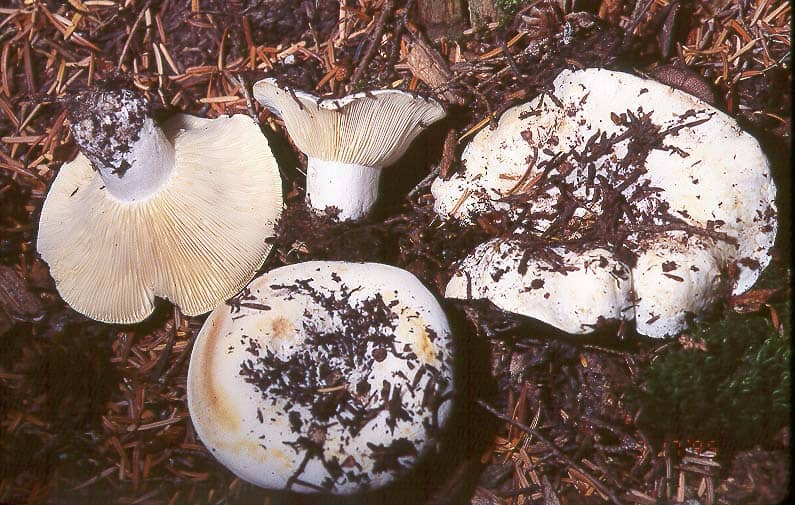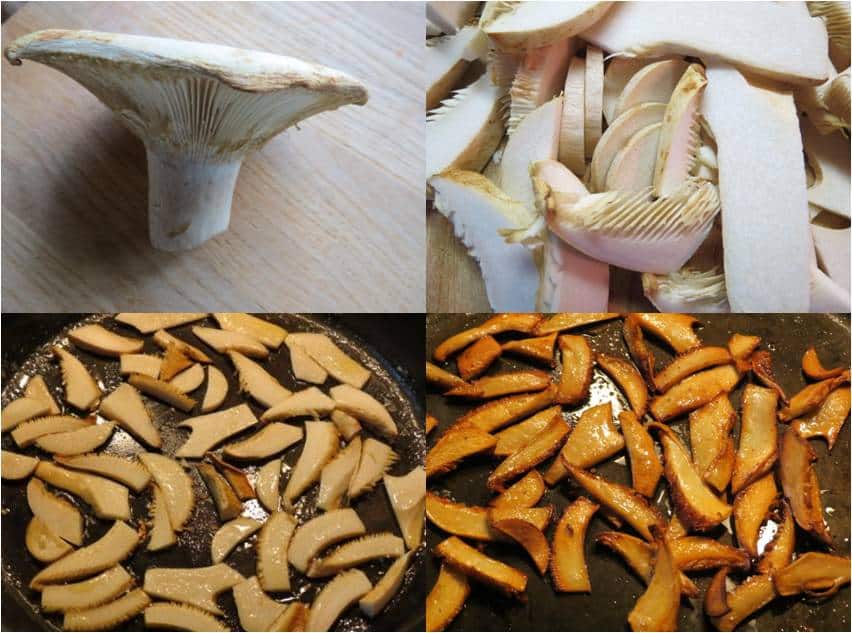The Truth about Russula brevipes

During my lifetime I’ve tried to mostly avoid the pitfalls of dealing with rumor, hearsay, and innuendo. I have heard my share of them from various sources and have generally learned to take them all, as they say, with a grain of salt; my preference being Himalayan Salt. However, the opinions we manifest from hearing these unsubstantiated tidbits of information can certainly influence our thinking and the choices we make. Unfortunately, the persistence of some rumors has basically immortalized them in stone, such as; George Washington had wooden teeth, Albert Einstein was bad at math, the Loch Ness monster is real, and men with big hands have big…., well you get the picture. While I consider myself large handed, I’m not writing this article to either substantiate nor deny any of these facts statements. My goal is to undo the damage made by the utterly unsupported misrepresentation of an attractive, robust, rugged specimen of a mushroom commonly known as the Short-Stemmed Russula (Russula brevipes). This mammoth of a mushroom (left side of picture) certainly doesn’t deserve the reputation associated with it and should never be punted, kicked, or trampled. The brevipes , as with all species in the genus Russula, is ectomycorrhizal (symbiotic) with conifers in Oregon and comprised of hyphae with large spherical cells. This cell structure gives this genus the ability, when fresh, to snap cleanly like breaking a piece of chalk rather than tearing like mushrooms comprised of more fibrous, elongated cells. This characteristic is an important feature in helping to identify members of the genera Russula and Lactarius. Chewing on a piece of cap from a fresh Russula mushroom, then spitting it out, will also give you a good indication of its potential edibility. The general wisdom is to avoid those that are acrid (pungent) or produce heat reminiscent of hot peppers. Even though few species in the genus Russula are known to be poisonous, proper identification is always essential. I would like to tell you there are no brevipes look-alikes, but sadly that would be engaging in rumor, hearsay, and innuendo.

The White and Black Russula (Russula albonigra) starts out white then begins to blacken with age. It also quickly turns black in areas that are handled. Unless you pick this mushroom when it is quite small, it usually has already started its conversion from white to black. While the taste is mild, it is not recommended as an edible.

The Cascade Russula (Russula cascadensis) does not attain the large size of the brevipes but can look quite similar. However, the taste test will quickly alert you to having found Cascadensis as it is quite acrid to hot and will also stain a cinnamon color where handled. This species is also not recommended as an edible.

The Short Stemmed Russula (Russula brevipes) is white to slightly off white when fresh. The cap can have yellowish to yellowish-brown spots, is broadly funnel shaped and over time can become wavy at the margins. While surface color does not change due to handling, it will become a more dingy beige as it ages. For consumption, it is best picked when it is smallish to medium sized and still very firm. I always slice off a small piece of the stem and cap to make sure fungal gnat larvae are not visibly present. If clean, nibble on the cap slice to verify its mild flavor, then spit it out. This species is also the host to the parasitic fungus Hypomyces lactifluorum, which converts this mostly unassuming mushroom into the more sought after Lobster Mushroom. I tell fellow mushroomers that the primary difference between brevipes and the lobster is what you’ll pay for it at a grocery store or mushroom stand. In my and Sandy’s opinion, with the lobster mushroom you are basically paying for its orange coloration. If you found that last statement disconcerting, please take a few moments to recover from your gasp of astonishment before you continue reading this article. OK then. I will admit, the orange color of the lobster makes it quite showy and easy to spot in the woods. See, it’s not all bad news.

In a pictorially documented taste test that we recently conducted, we took a moderate sized brevipes, cleaned it up, then sliced it into quarter-inch wide pieces. This being a very dry mushroom, we first heated up a little olive oil and butter, then placed the slices into the sauté pan so each one fully contacted the pans surface. Once they achieved their golden brown hue, it was all over but the tasting. The texture was still firm but the flavor was mild with a very pleasant sweet taste that both of us really enjoyed. In fact, we actually rated it slightly better than the lobster mushroom in flavor. I would go as far as to say the Russula Brevipes is; better eaten than beaten, better chewed than booed, and better picked than kicked. Next time you see one of these ubiquitous mushrooms you may want to think about giving it your own taste test evaluation.
Wishing the both of you who read my articles a belated Happy New Year and hoping CMS will be able to conduct maskless forays this coming fall. Stay safe and good mushroom hunting.
References & Pictures:
Photos & information for Russula albonigra and Russula cascadensis are from the Northwest Key Council website. The photos of these two species were taken by Benjamin (Ben) Woo, a key member in the Puget Sound Mycological Society and expert on mushroom species in the genus Russula. Sadly, Mr. Woo passed away on February 8, 2008.
All other photos taken by Ron & Sandy and all sautéed brevipes slices were also eaten (and enjoyed) by Ron & Sandy.
Reference information for this article was also taken from All That the Rain Promises and More, Mushrooms of the Redwood Coast, and Mushrooms of the Pacific Northwest.





